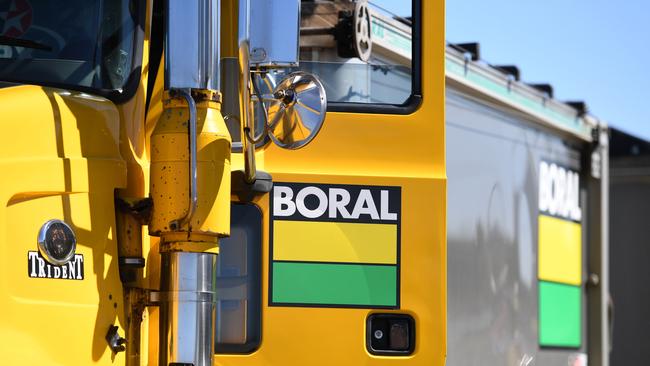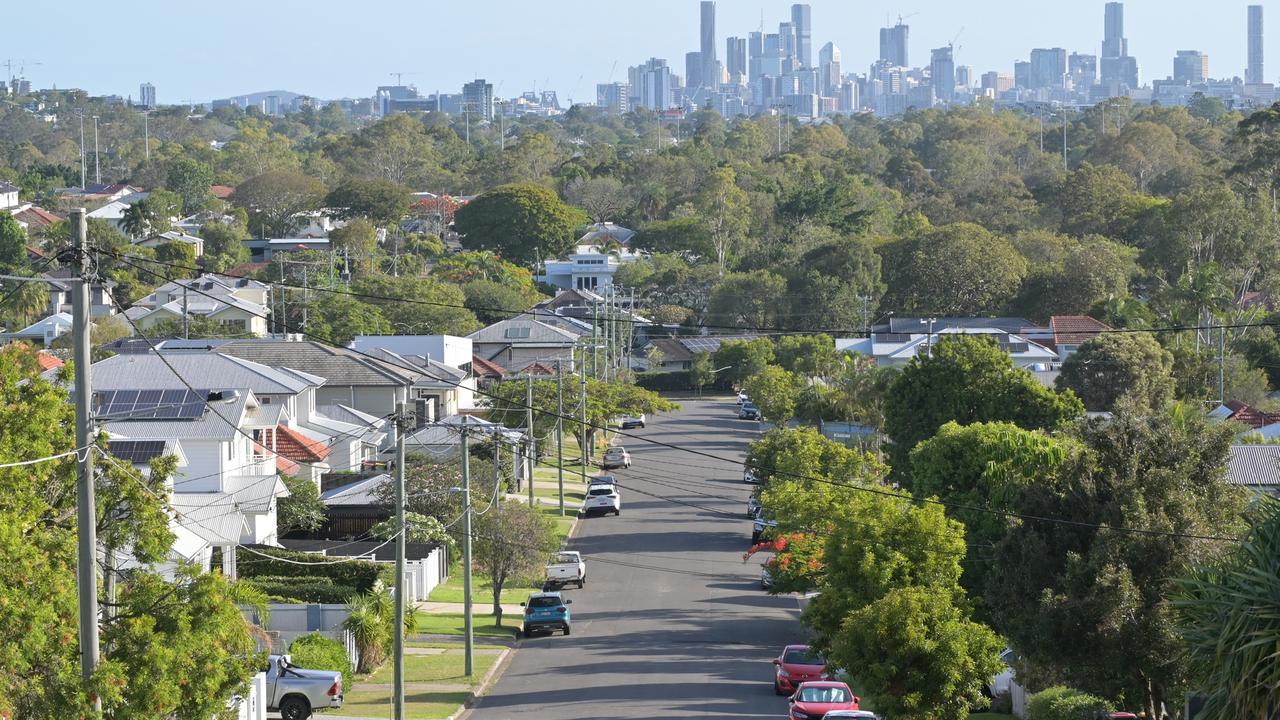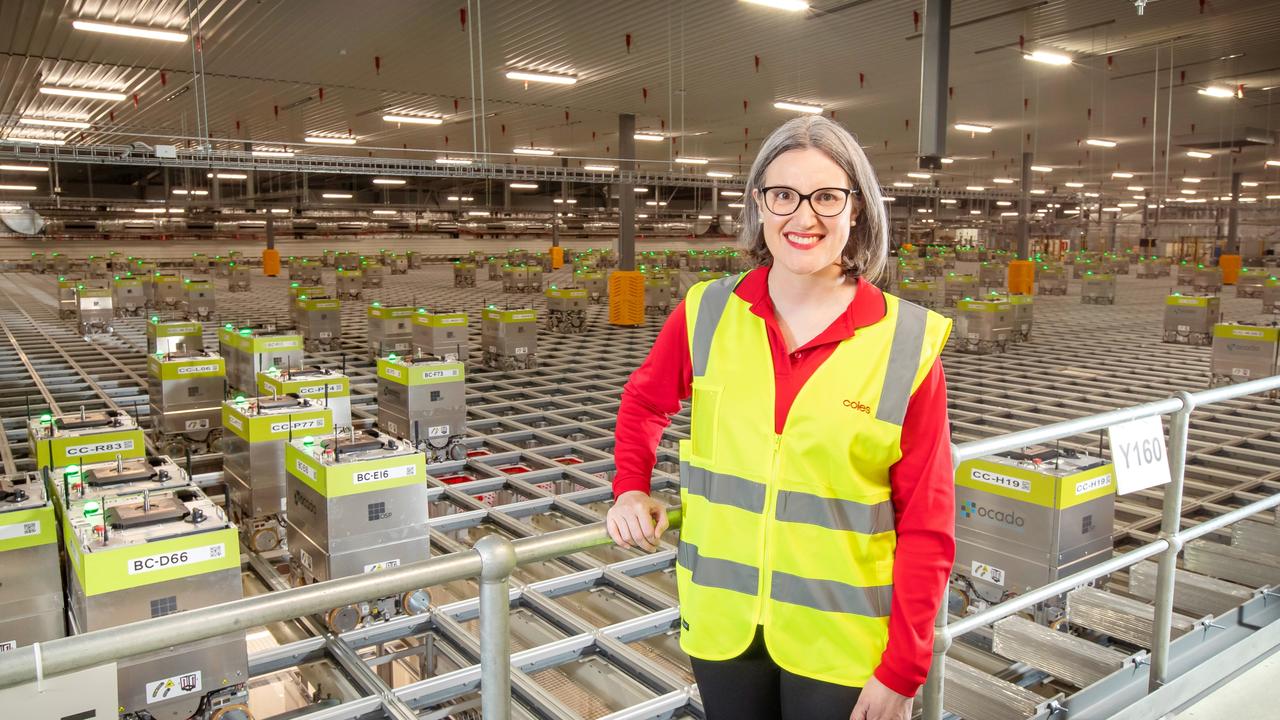Corporate Australia has better than expected February reporting season, but profits below average
Corporate Australia has defied concerns of economic slowdown, as more than seven in 10 ASX-listed companies met or exceeded market profit forecasts.

Business
Don't miss out on the headlines from Business. Followed categories will be added to My News.
Corporate Australia has defied concerns of economic slowdown to emerge resilient through the February earnings season to a barrage of headwinds impacting businesses.
More than seven in 10 ASX-listed companies met or exceeded market expectations for profitability as they revealed their half-yearly results.
And growing optimism for earnings to rebound in the 2025 financial year has helped drive the local sharemarket to new highs, with the S&P/ASX 200 closing at a record 7745.60 points on Friday.
Resilient consumer spending, tight cost management, inflation moderation and positive economic outlooks typified commentary from Australia’s biggest companies.
But smaller companies were the biggest positive surprises, with 32.9 per cent of All Ordinaries listed groups beating market expectations, while 39 per cent had a result in line with forecasts and 28 per cent fell short, according CommSec analysis.
This compared to 35.5 per cent of ASX 200 companies that “missed” or fell short of analyst forecasts; 32.2 per cent “beat” expectations and 32.2 per cent of companies met expectations.
CommSec senior economist Ryan Felsman said results were better because expectations before reporting season had been very conservative, while market analysts and companies were cautious about potential economic slowdown and the highest interest rates in 12 years.
“Corporates were also keen to play down market expectations given uncertainty about the market and economic outlook,” he told The Australian.
“And while corporate profits are expected to slow with expectations of a decline of 5.5 per cent in fiscal year 2024, the outlook appears rosier. Economic activity remains resilient, consumer prices are easing, home prices are rising and unemployment remains low.”
Domestic cyclicals and growth stocks delivered the best results, with positive surprise across sales, margins and dividends. Stand out sectors included consumer discretionary, real estate and information technology.

Maple-Brown Abbott co-portfolio manager of Australian Small Companies Phillip Hudak said retailers were among the biggest positive surprises as cost of living pressures have seen retail turnover ease and consumer confidence remained at recession-like levels.
“The consumer discretionary sector was the big surprise given more resilient top line sales relative to previous conservative assumptions,” he said.
“This, combined with easing input costs, has allowed retailers to continue to clear excess inventory without elevated promotional activity. This resulted in better margins.”
Cost management was the number one talking point this reporting season, with most companies still pointing to the elevated and sticky costs they face.
UBS strategist Richard Schellbach said the peak rate of upward momentum in cost growth may be over.
“One third of reporting companies saying cost pressures have now passed peak intensity. “Builders stood out as a group whose positive results were driven heavily by impressive cost control,” he told The Australian.
Construction materials heavyweight Boral had one of the best results as it smashed analyst expectations by 20 per cent, after its profit increased 143 per cent to $138.6m despite headwinds in the construction sector.
The technology sector provided several notable “beats” amid a wave of positive sentiment over the outlook for AI proliferation, including from WiseTech which benefited from price increases.
IG market analyst Tony Sycamore said the slightly better beat in Australian corporate earnings overall was driven by companies having the ability to pass on costs at a time when many reported higher labour and other expenses.

“We have seen companies pass on high prices from labour and their cost bases increase onto consumers,” he said.
“Consumers have shown that they have been willing to accept price rises, so it has been a bit of a take from one hand to give to another scenario and companies would have been in worse shape if they could not pass on cost rises.”
Expenses in aggregate lifted around 6 per cent, with revenues up 3 per cent. As a result companies have found it harder to turn a profit.
The period saw 81 per cent of ASX-listed companies report a net profit, but CommSec noted that it was the lowest result in seven reporting periods and below the average of 87 per cent.
Aggregate profits have fallen by 35 per cent.
The materials sector revealed key misses — including from BHP, Rio Tinto and Woodside — as a result of commodity and energy cost curves steepening and labour conditions challenging amid supply challenges due to rising geopolitical risks.
Despite the positive skew on results and mixed outlook statements, few companies had anything positive to say about the top-line growth environment.
UBS noted that about 60 per cent of companies it tracked saw their sales trajectory decelerating as cost of living impacts continue to hit household budgets.

VanEck portfolio manager Cameron McCormack said while Australian companies fared better than expected, the market was a touch too optimistic on Australia’s economic outlook.
“Inflationary pressures are more pronounced locally than globally, requiring the Reserve Bank to keep rates on hold for longer. There is an outside chance of another hike,” he said.
“Companies also noted an acceleration in labour costs, driving the implementation of cost management initiatives to protect margins.”
Economic growth is expected to be sluggish with still-high inflation crimping profits, but tax cuts and monetary policy easing could support the consumer and businesses at the back end of 2024, he said.
Earnings per share (EPS) growth is expected to rebound to around 4 per cent in fiscal year 2025, according to IBES estimates.
Mr Schellbach said that interest rate remain a headwind for companies with many having been caught out despite the Reserve Bank’s rate hiking cycle having started two years ago.
“Companies at results were overwhelmingly hawkish on the topic of rates, pointing to rising interest expenses. At the same time analysts (who usually prefer to focus higher up on the income statement), continued to report material misses below the EBIT line due to their own underestimation of interests costs,” he said.
For the S&P/ASX 200 group, dividends totalling $33.9bn will be paid in coming months, compared to $34.8bn of dividends announced at the same juncture in 2023.
Originally published as Corporate Australia has better than expected February reporting season, but profits below average



